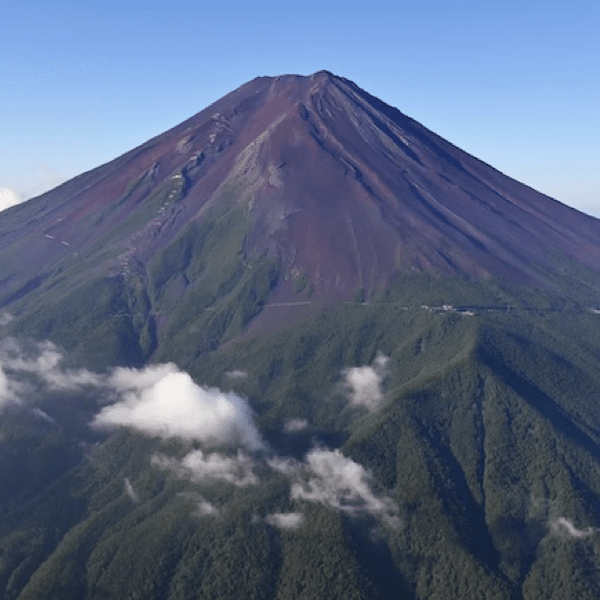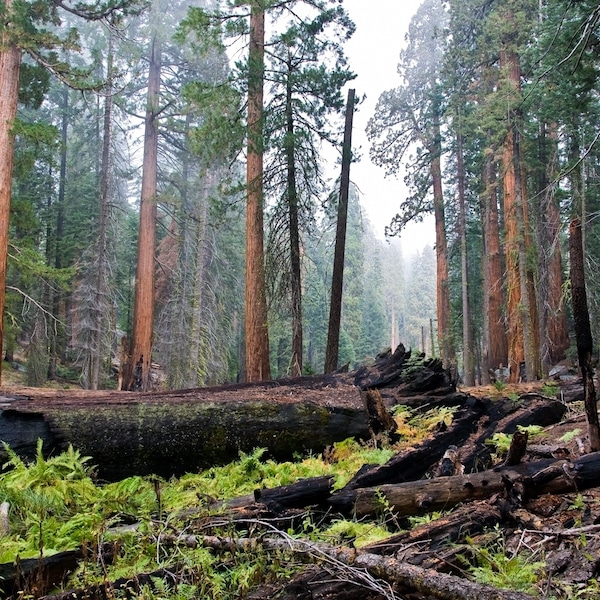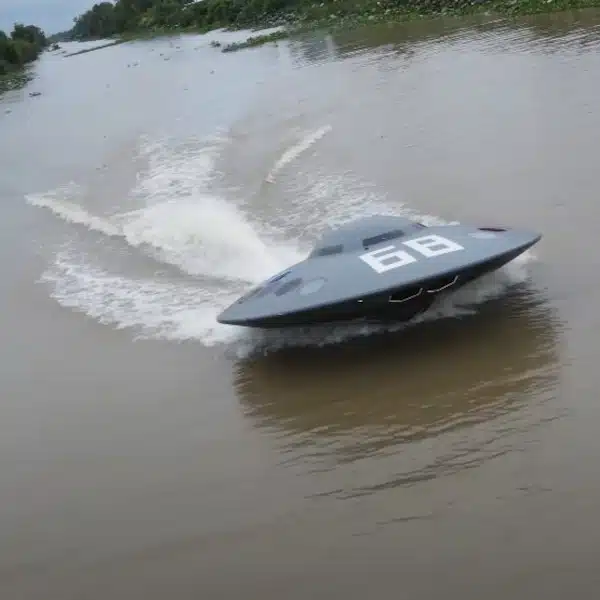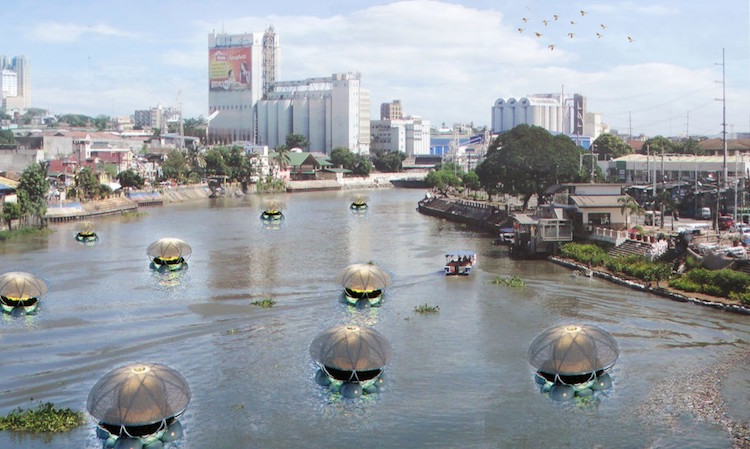
Polluted waterways are a fact of life in many parts of the world, taking a valuable resource away from populations in need. Janine Hung’s Jellyfish Lodge, designed for Inhabitat’s Biodesign Competition, helps combat this issue with an innovative, yet familiar, form.
Shaped like a jellyfish, the solar-powered structure contains an aquaponic garden where four kinds of fish could be raised, in addition to plants like lettuce, basil, and oregano. Local residents who helped maintain the structure would be able to benefit from the garden. Beyond nourishing the population, Jellyfish Lodge’s biggest achievement is owed to its tentacles, which trap floating garbage and test water level toxicity. Polluted water flows through the tentacles into round microbial chambers that treat water, which, once purified, is returned to the water system or stored in one of four spherical cistern tanks. This clean potable water could be used domestically or for aquaponics.
Each lodge also contains a living area, kitchen, private quarters, and compost toilet inside the bell of the jellyfish. Hung’s design, which received an honorable mention in the competition, brings life to unsafe waterways, restoring them as a space for community benefit.
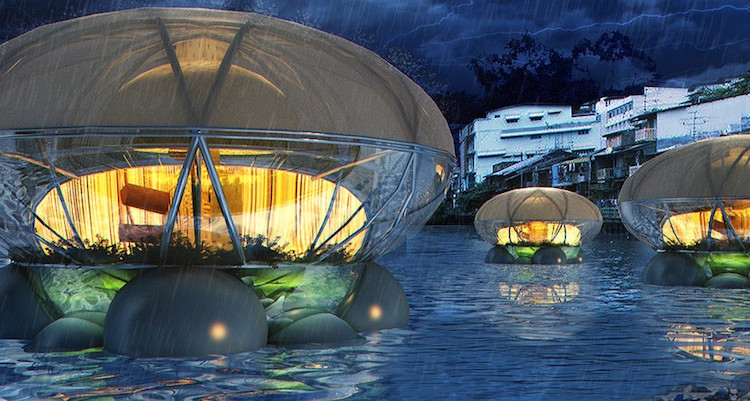
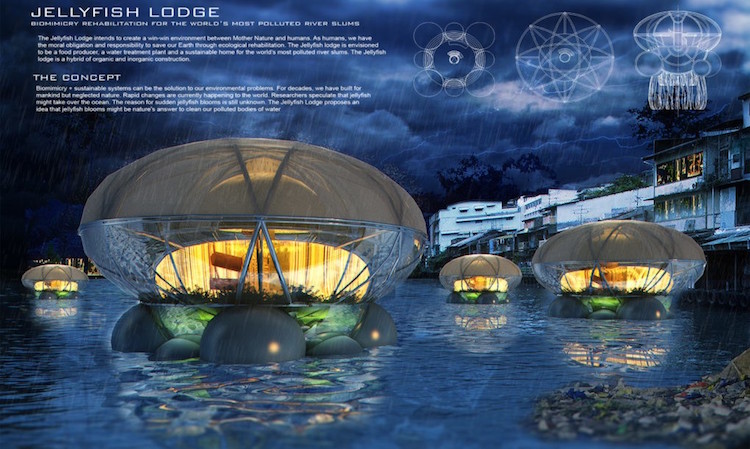
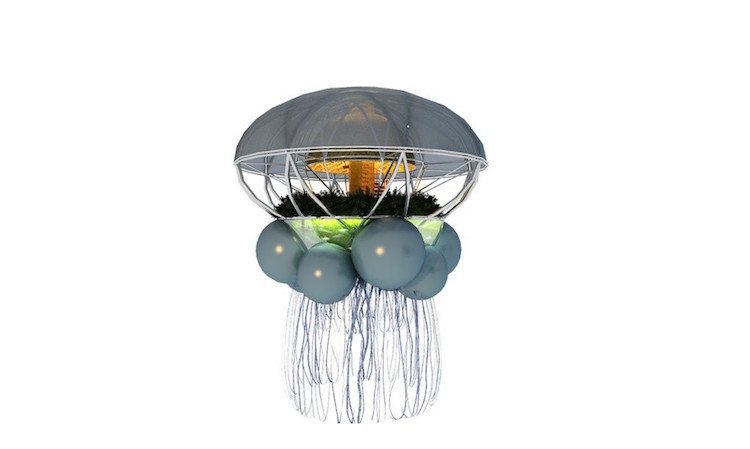
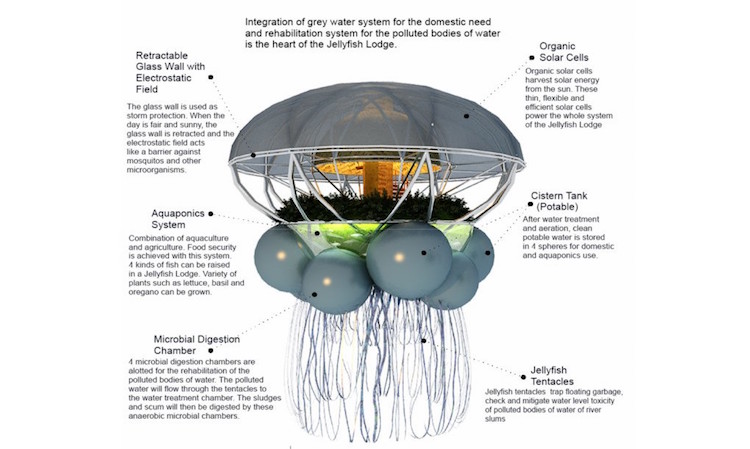

via [Inhabitat]
All renderings via Ian Go.












































































